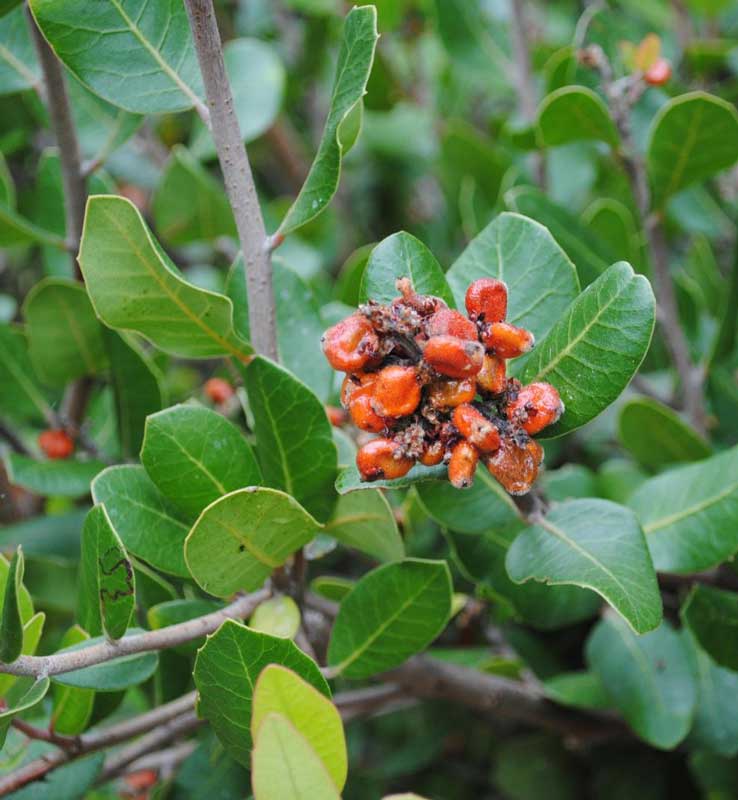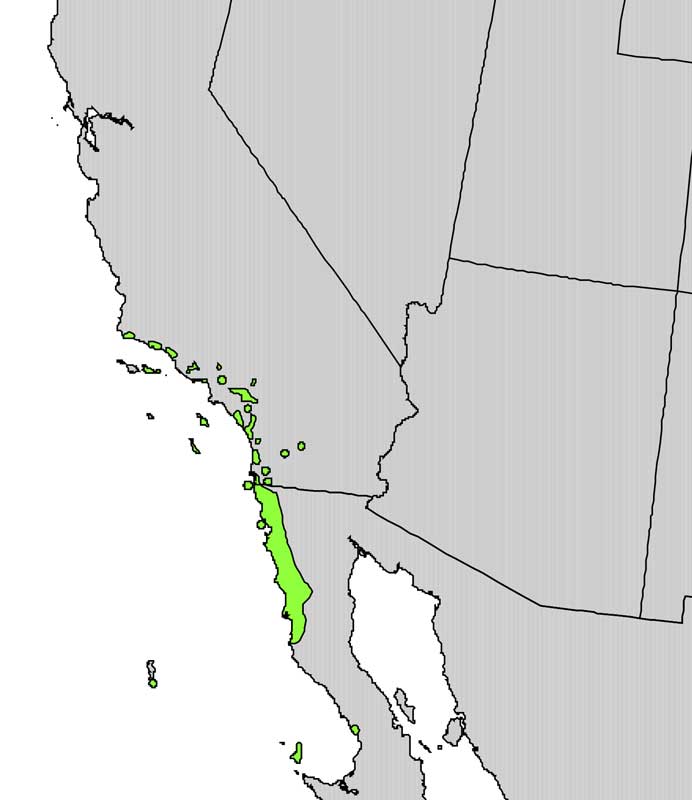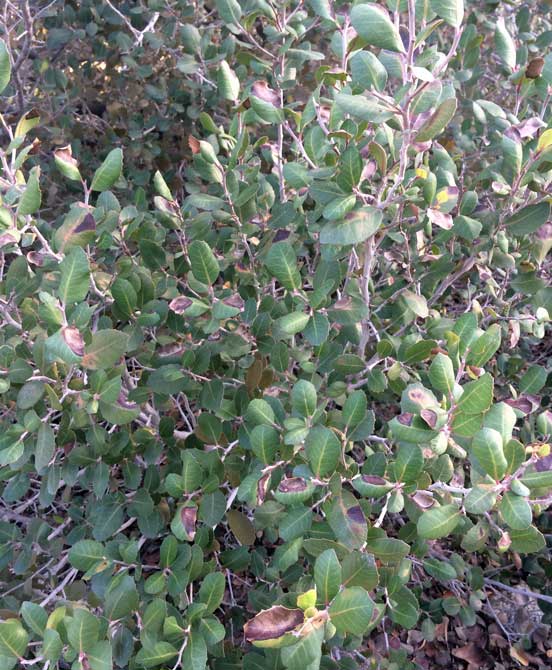Ethnobotany of southern California native plants:
Lemonade Berry (Rhus integrifolia)

photo credit:Oabjf34Q, CC BY-SA 3.0
Ripe lemonade berry fruits.

Range distribution map: lemonade berry mostly found in the woodlands and chaparral biomes of southern California and Baja, Mexico.
Lemonade Berry (Rhus integrifolia)
Lemonade berry, also known as lemonade sumac, is a shrubby tree unique to the plant communities of southern California and Baja. The shrub can grow up to to 25 feet in height and is most commonly found in the chaparral biome, often along north facing slopes of low elevation.
The fruit from this plant is edible. Although, the berry is not quite as tasty as the name suggests. This fruit is very high in various types of tannins. These tannins impart a sharp, tart taste to the berry. In general, Native Americans made a mush from the berries that was edible. It is likely the tannins were then leached from the mush before consumption.
The Mahuna people ate the lemonade berries to quench their thirst.
The Kumeyaay of the San Diego region would wad up leaves from this plant to keep their thirst at bay during long, hot journeys.
The Cahuilla people, near the Mojave Desert, soaked the berries in water and drank as a tart beverage.
Lemonade berry shrub
Lemonade berry is in the botanical family, Anacardiaceae. This family also contains poison oak and mango. Both poison oak and mango can create allergic reactions if you contact the wrong part of the plant. Many species within the Rhus genus are considered toxic.

Lemonade berry foliage in the winter.
References:
Hedges, Ken 1986 Santa Ysabel Ethnobotany. San Diego Museum of Man Ethnic Technology Notes, No. 20 (p. 37)
Romero, John Bruno 1954 The Botanical Lore of the California Indians. New York. Vantage Press, Inc. (p. 70)
Please return to our main Ethnobotany of southern California page.
On our main ethnobotany page, we present a clickable list of the southern California native plants that became a part of the culture of Native Americans and early European settlers. These plants were used for medicine, food, shelter, drink, tools and art.
Warning: The information about plants on this website is intended for general educational purposes only. The author of this website accepts no responsibility for problems arising from the user’s misidentification, misuse, or use of plants. Please read the full TERMS associated with this website.
